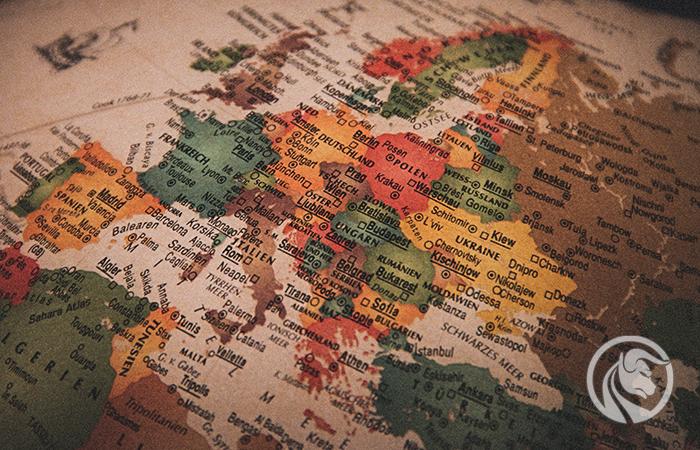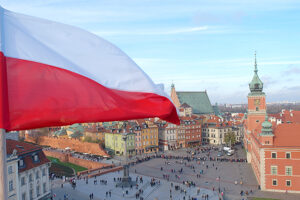The second half of the year better for the countries of Central and Eastern Europe?
After three years of difficulties in the growth of the Central and Eastern European (CEE) economy, it may be on the verge of recovery. As we enter the second half of the year, the region appears to be "getting the best of it" in an albeit still challenging environment. So far this year, most economies have managed to avoid the most pessimistic forecasts.
While the outlook for a rebound in global trade is not particularly optimistic, trade has already provided a significant offset to weak domestic demand in the region. Theoretically, the more open economies of Hungary and the Czech Republic may benefit more from improving the volume of trade in goods.
Lower energy prices benefit the entire region – especially Turkey. We all remember how higher energy prices wreaked havoc on the external balance sheets of Central and Eastern Europe last year, and lower prices this year are most welcome. Lower energy prices also support the Czech Republic and Poland - in encouraging fuel retailers not to increase their margins. This will help in the process of disinflation throughout the region.
In terms of tourism, Turkey, Hungary and Poland generally record positive net receipts from tourism. Romania in particular has problems here. Some support can certainly be the return of tourism to pre-pandemic levels. These effects will be felt more strongly in Croatia and Bulgaria, where tourism is worth a fifth of GDP.
Improvement of upward trends
Taking into account these trends, i.e. slightly improving trends in trade, lower energy prices and the return of tourism to pre-pandemic levels, it seems that the upward trends are improving in the second half of the year. The main driver of this will be the extensive process of disinflation.
Evidence of disinflation should be sufficient to initiate/extend monetary policy easing cycles in Hungary, in Czechiaand even one-off rate cuts in Poland this year. Romania may be tempted to join the lower rates if it sees others making a move. A clear process of disinflation should also mean less pressure on real household incomes and suggests that domestic demand will not weigh as heavily on activity as it did during the recent cost of living crisis.
However, there will be key differences across the region due to the local political climate. Fiscal policy is a clear example here. It seems that fiscal policy will remain loose until the October elections in Poland, while the Czech Republic embarks on an aggressive fiscal consolidation programme. Similarly, politics plays a role in the region's access to EU funds, which we should know much more about by September/October this year.
Türkiye is once again very focused on its own political cycle. A new economics team is ahead the much greater challenge of controlling inflation. It's just the beginning, but signs of more orthodox policy are pointing to big interest rate hikes over the summer. Looking further into the region, there is also an improvement in Ukraine's foreign exchange reserves in the face of the drama of the ongoing conflict.






















![Forex Club – Tax 9 – Settle tax on a foreign broker [Download the Application] Forex Club - Tax 9](https://forexclub.pl/wp-content/uploads/2024/02/Forex-Club-Podatek-9-184x120.jpg?v=1709046278)
![Trading View platform – solutions tailored to the needs of traders [Review] trading view review](https://forexclub.pl/wp-content/uploads/2024/03/trading-view-recenzja-184x120.jpg?v=1709558918)
![How to connect your FP Markets account to the Trading View platform [Guide] fp markets trading view](https://forexclub.pl/wp-content/uploads/2024/02/fp-markets-trading-view-184x120.jpg?v=1708677291)
![CRB index – one of the popular commodity market benchmarks [Guide] crb index](https://forexclub.pl/wp-content/uploads/2024/05/indeks-crb-184x120.jpg?v=1715055656)
![How to invest in ChatGPT and AI? Stocks and ETFs [Guide] how to invest in chatgpt and artificial intelligence](https://forexclub.pl/wp-content/uploads/2023/02/jak-inwestowac-w-chatgpt-i-sztuczna-inteligencje-184x120.jpg?v=1676364263)






![Izabela Górecka – “Success on the market depends not only on knowledge, but also on emotional stability” [Interview] Izabela Górecka - interview](https://forexclub.pl/wp-content/uploads/2024/04/Izabela-Gorecka-wywiad-184x120.jpg?v=1713870578)
![WeWork – the anatomy of the collapse of a company valued at $47 billion [WeWork, part II] wework bankruptcy story](https://forexclub.pl/wp-content/uploads/2024/04/wework-bankructwo-historia-184x120.jpg?v=1711729561)
![Adam Neumann – the man who screwed up Softbank [WeWork, part AND] adam neumann wework](https://forexclub.pl/wp-content/uploads/2024/04/adam-neumann-wework-184x120.jpg?v=1711728724)

![The most common mistakes of a beginner trader - Mr Yogi [VIDEO] Scalping - The most common mistakes of a beginner trader - VIDEO](https://forexclub.pl/wp-content/uploads/2024/03/Scalping-Najczestsze-bledy-poczatkujacego-tradera-VIDEO-184x120.jpg?v=1711601376)
![Learning patience: No position is also a position - Mr Yogi [VIDEO] Scalping - Learning patience - No position is also a position - VIDEO](https://forexclub.pl/wp-content/uploads/2024/03/Scalping-Nauka-cierpliwosci-Brak-pozycji-to-tez-pozycja-VIDEO-184x120.jpg?v=1710999249)
![When to exit a position and how to minimize losses - Mr Yogi [VIDEO] Scalping - When to exit a position and how to minimize losses - VIDEO](https://forexclub.pl/wp-content/uploads/2024/03/Scalping-Kiedy-wyjsc-z-pozycji-i-jak-minimalizowac-straty-VIDEO-184x120.jpg?v=1710336731)


















